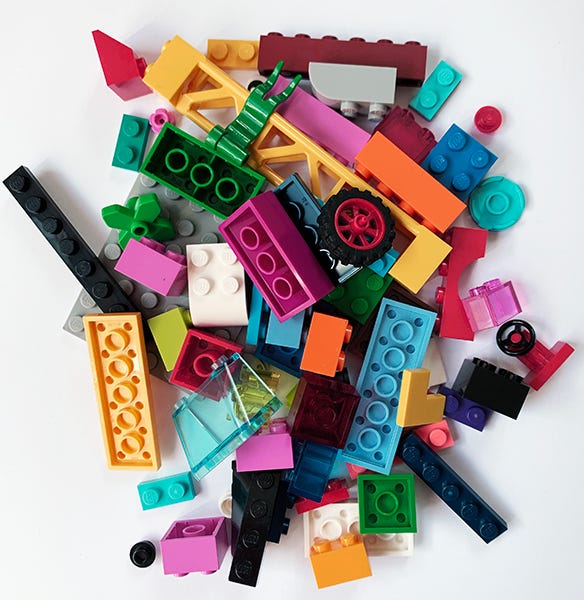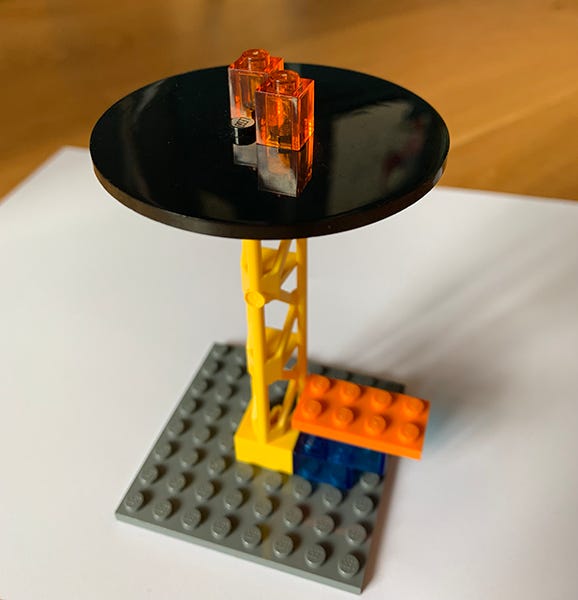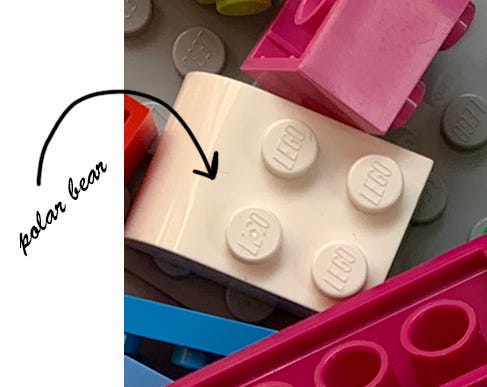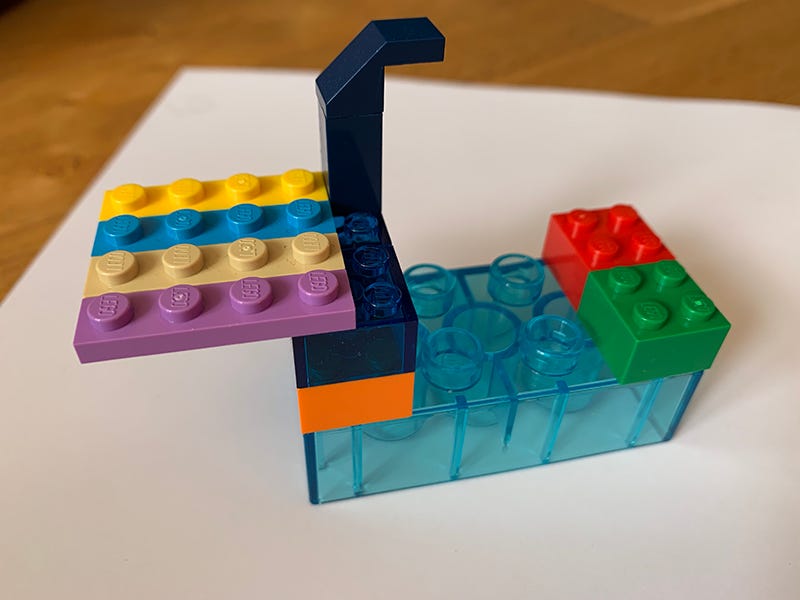Over the past few weeks I’ve been running one-hour LEGO® Serious Play® (LSP) ‘experiences’ for my colleagues, so they can get a feeling for the power and uniqueness of the method. The objective is to experience how LSP might suit your workshop or retreat.
LSP is a highly facilitated process where participants use LEGO bricks to build models as a way of exploring challenges or opportunities at work. I wrote about LSP generally when I became a certified facilitator, but let me outline the ‘experience’ for you.
The one hour is designed to give you a sense of the LSP four-step process:
– The facilitator poses a question
– Everybody builds a model in response to the question
– Everybody shares the story of their model
– Everybody learns and improves their understanding, putting them in a better position to take the next step , for example, designing new offers, agreeing a vision or strategy, or revising a process.
The method ensures that everyone participates evenly, and ‘thinking with your hands’ unlocks creativity that is otherwise untapped. It involves all learning styles and creates a safe space, since challenges and struggles are mediated by the models. Here’s the one hour agenda:
1. Build a Tower
During the ‘experience,’ we start with everyone building a tower to get familiar with the bricks. This is important because some people will have never used LEGO or may feel worried that ‘they’re not creative enough’ or that it’s ‘silly’. Building ‘a tower that pleases you’ is a low-risk start.
2. Experiment with Metaphor
Then we explore the use of metaphor. People build random models (from 5 random bricks they select) and find out that it’s not too hard to tell almost any story with your randomly-built model, using the power of metaphor. For example if you want a polar bear in your model, you don’t need to build an anatomically correct representation. One white brick can be the metaphor for a polar bear.
The bricks can mean anything the model-builder wants. For example in the model below, the red and green bricks can represent ‘stop’ and ‘go’ decisions in a work flow, or love (red) for the environment (green). Or maybe the colours aren’t significant other than to represent two different work groups: marketing and engineering.
Metaphor is part of the magic of LSP and why it’s possible for the models to communicate about sophisticated problems and situations that might be hard to capture otherwise.
2. Build a model that tells a story
Next in the experience we put metaphors and bricks to work building a model that tells a story about an important goal that you have. Everybody builds, then shares their models and we begin to ‘ask questions of the model.’ We see how the ideas from the models stick in our minds and become memorable in a way that just talking about ideas doesn't accomplish.
3. The next levels of LSP
With individual models in hand, we talk about the levels of LSP that come after the individual model build. If we’ve built models responding to a given challenge, then we might combine the models into a landscape of concepts. Or we might build a shared model where we assemble sections of our models that we’ve identified as priorities or ‘non-negotiable.’
Other levels of LSP involve combining individual or shared models into systems, where we can test how the system might respond to different events or changes. Understanding the interactions of the systems can be helpful in developing simple guiding principles. LSP can also be used in one-to-one or small group sessions.
4. Reflection
Finally, I find out from participants how their experience of the one hour has been. Most people are surprised and delighted at how it feels to engage with work through quick model building. We explore their ideas of where it could be helpful, and I answer any questions that come up.
Does LSP sound intriguing to you? If so, how would apply you it? Let me know in the comments.
If you’re in London or not too far outside it, I’d be happy to offer you ‘the one hour.’









Thanks for this inspiration, Ann! After your last post, I decided to give LSP a try with some uni first-years here in the US. We did 6 bricks, a metaphor round, build a tower with you in it, and then the goal-setting session. It worked really well! I'm going to be offering similar "lunch and learn" 1-hour sessions to other groups at my uni as well.